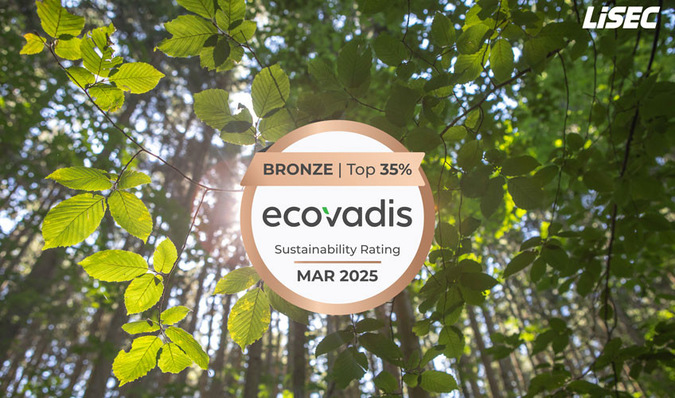Thoughts on sustainability are particularly obvious for such a valuable and durable product as glass.
In some countries, the reuse of building materials is already strongly pushed and required by law (e.g. in some renovation projects in Switzerland).
This is also reflected in the goals of many large companies to use 100% sustainable materials in the future or to use them in their own (new) buildings: Investments for corporate headquarters, production and retail buildings are in close focus.
Where are the markets for reused glass?
The façade renovation business in particular offers great potential for the direct reuse of glass. For residential construction with rather smaller glass formats, "used glass pools" are more suitable for use, where the required basic glass is taken from a warehouse with tested used glass for further processing.
The Fachverband Konstruktiver Glasbau e.V. (FKG) - an association of glass manufacturers, glass processors, façade manufacturers, suppliers, engineering offices and universities - formed the "Sustainability" working group in mid-2022.

Matthias Rehberger
The aim is to develop technical principles to enable the continued use of older glazing, true to the motto "Re-Use before Recycle".
The companies, planners and universities active in the FKG working group contribute their expertise and support the project.
Are there guidelines for the re-use of glass?
Currently, there are no normative or technical principles that can serve as guidelines for planners and those carrying out the work. Therefore, it is being investigated whether the established standards and guidelines can be used or whether graduated quality requirements must be defined.
The technical, but also legal, hurdles for the further use of existing glass should be as low as possible. With this project, the FKG hopes to generate application-related experience and make it available to the community.
Which types of glass are particularly suitable for re-use?
Older glazing" (existing glass) is primarily understood to be non-tempered float glass panes that are used as monolithic glazing, laminated (safety) glass or as insulating glass.
See also: The best way to dispose of PVC windows and doors
The advantage of non-tempered glass is that it can still be cut and processed after removal. This applies both to individual panes of glass and to laminated glass. In addition, the further use of toughened glass panes is also conceivable if they are to be further processed in the same format (e.g. into laminated safety glass or insulating glass).
What aspects are being investigated by the partners in the FKG?

Matthias Rehberger
First of all, the visual quality and mechanical strength of the glass are determined as characteristics. Here the FKG is discussing quality classes still to be defined in order to take the ageing of the glass into account. Laminated safety glass (LSG) is currently being examined and evaluated with regard to the fulfilment of the required safety properties.
In addition, the suitability for glass finishing is being investigated. This includes cutting, edge processing, lamination, thermal tempering and the application of any coatings. For insulating glass, the cutting of the edge seal and renewal including refilling of the space between the panes with inert gas is being tested.
Implementation: In order to evaluate the aspects outlined above, older glass panes are being removed and examined as part of renovation projects.
The first glass panes have already been removed as part of energy renovations and made available to the FKG for further investigations. The previous installation situation and use were documented.
For the evaluation of the old glass, the glazing was processed into test specimens in a glazier's shop or insulating glass was separated and sent to the participating laboratories for examination and evaluation.
Visual assessment of the re-use glass
The visual evaluation of older glazing is carried out by experts from the glass industry and façade planning. In addition to BF Guideline 006/2019 "Guideline for assessing the visual quality of glass for building" ("Hadamar Guideline"), DIN 572 for float glass also serves as a basis. An automated assessment using scanners is also being considered. Here, the FKG benefits from its experience in the automated detection and assessment of anisotropies (cf. leaflet FKG 01/2019, https://www.glas-fkg.org//images/Merkblaetter/FKG_Merkblatt_Anisotropien.pdf).
Glass processing

Matthias Rehberger
At the moment, it is assumed that non-tempered waste glass made of float can be cut, ground or polished and, if necessary, also drilled and milled without any problems. These processes will inevitably be used for the production of the various test specimens. At the moment, the FKG assumes that the cutting process is the most critical (possibly the used glass breaks more uncontrollably depending on the depth and size of the scratches).
Also interesting: How will rising energy prices impact the glass sector?
However, initial experience shows that cutting and breaking older glazing is possible without any problems. Therefore, drilling, milling and grinding will probably also be possible without major challenges.
Strength of the glass
The mechanical strength is determined according to DIN EN ISO 1288, four-point bending test and double ring bending test. Previous research work by Schula and Sofokleos, for example, indicates that existing glass has a reduced initial strength compared to new glass. The extent to which this has an influence on further use still needs to be evaluated, since the strength of glass depends not only on the surface quality but also on the duration of loading.
Laminated glass and LSG
In the case of laminated glass (VG and LSG), a distinction is made between old LSG and newly laminated LSG made from old float glass. The properties of LSG are evaluated in particular in accordance with DIN EN ISO 12543, with ball-drop and pendulum impact tests confirming the safety properties. Adhesion tests, especially shear tests and pummel tests, are to confirm the adhesion of the interlayer film to the older glass surface. Initial preliminary tests are currently being carried out by the companies Kuraray and Everlam.
ESG and glass finishes

Matthias Rehberger
Other aspects such as tempering, printing and coating will also be evaluated in the medium term. In addition, the extent to which insulating glass can be upgraded is being investigated (starting with refilling with inert gas and replacing the desiccant in the edge seal, through to the production of insulating glass with old glass float panes).
Building law
From the point of view of building law, the questions of how "old products" fulfil current product requirements (CE marking) and how existing glass can be qualified do not only arise in glass construction.
The FKG is of the opinion that the hurdles for reuse must be as low as possible. At the moment, the reuse of existing building products seems to be conceivable under building law only via a construction project-related type approval (vBG) for types of construction or an approval in individual cases (ZiE) for building products; compare similar discussion for concrete ("R-concrete") or for steel.
Furthermore, the processor / façade builder will probably exclude any warranty for the reuse of existing glass at the moment, which is certainly not in the interest of the building owner.
Contact FKG
The Fachverband Konstruktiver Glasbau (FKG) is looking forward to a further exchange and is at your disposal for further discussions and suggestions. Interested parties can contact the board (Ingo Stelzer, Dr. Mascha Baitinger, Prof. Dr. Bernhard Weller) at any time.
First results of the investigations and the further procedure will be presented at the symposium "Glass in Structural Engineering" at the Munich University of Applied Sciences. For more information, click here: https://www.glas-fkg.org/.













